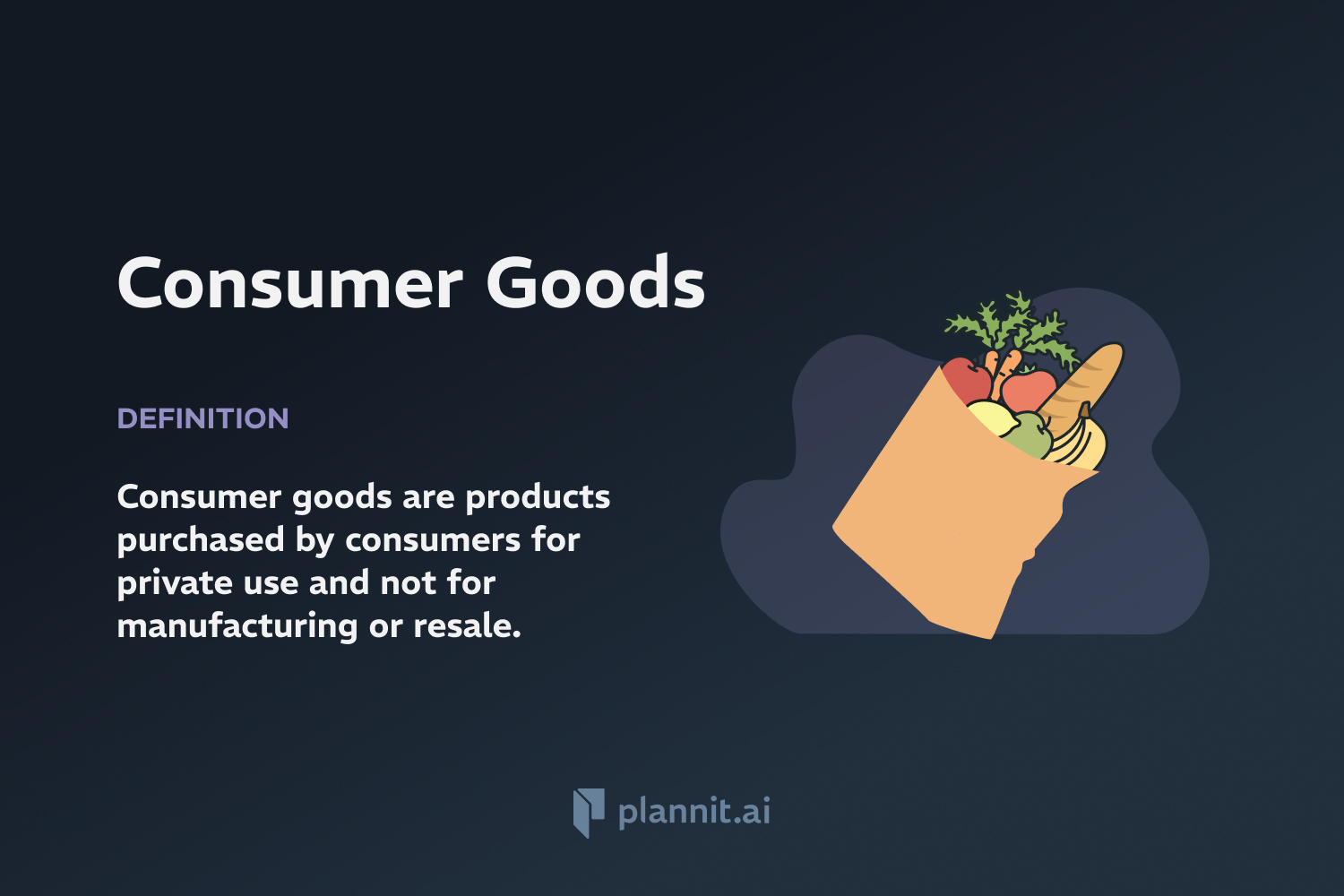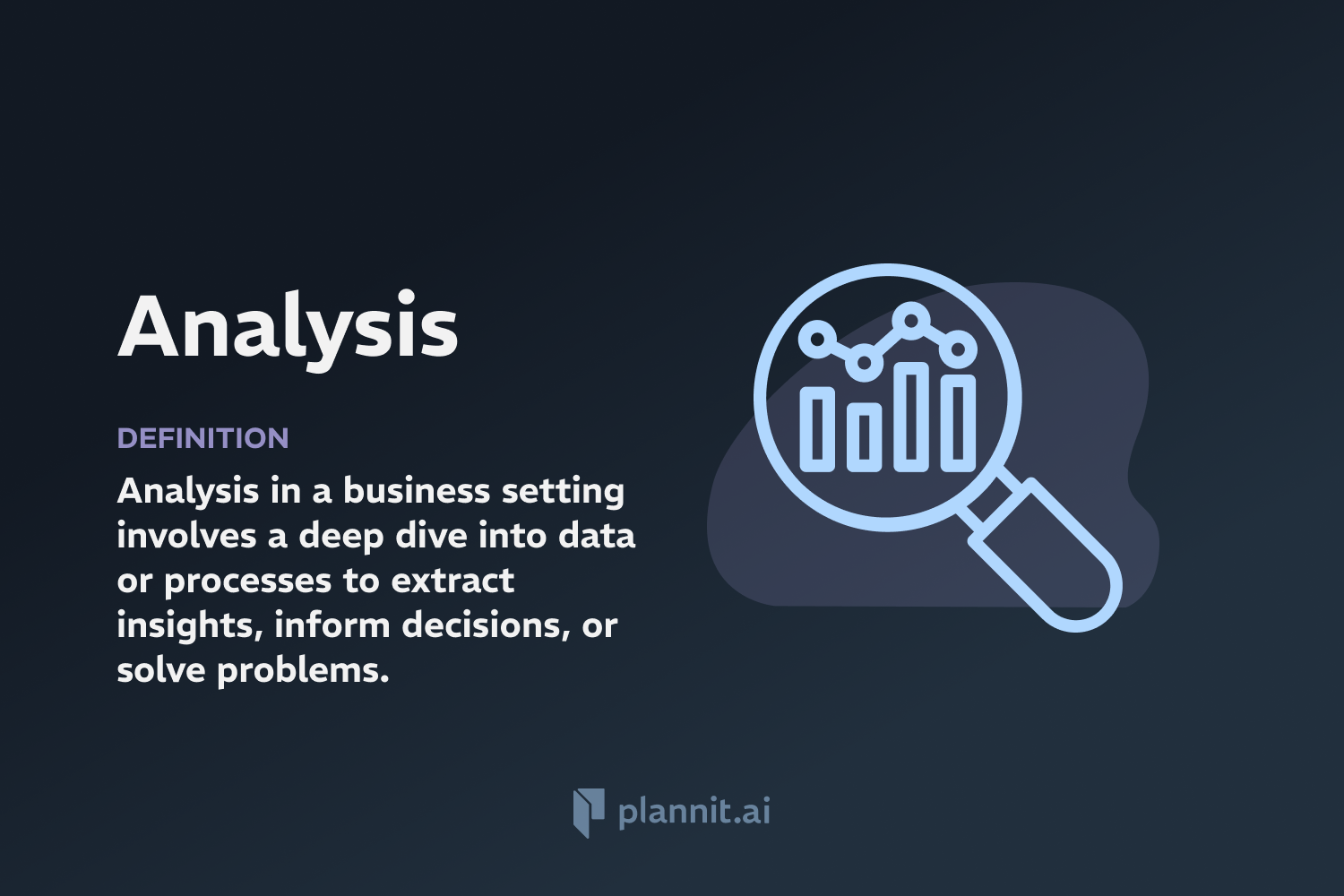Need Help With Your Business Plan?
Answer tailored questions and get a detailed business plan in minutes.
Consumer Goods: Definition & In-Depth Explanation

Consumer goods, also known as final goods, are products that are sold directly to consumers for their personal or household use. These goods are the end result of production and manufacturing and are what a consumer will see on store shelves. There are three main types of consumer goods: durable goods, non-durable goods, and services.
Purpose:
The purpose of consumer goods is to meet the direct needs and desires of consumers. They encompass a wide range of items that individuals purchase and use in their everyday lives, such as food, clothing, electronics, and household products. The availability and variety of consumer goods play a crucial role in the quality of life and economic stability by driving consumer spending, which is a significant component of gross domestic product (GDP).
Example:
Common examples of consumer goods include:
Durable goods like cars, appliances, and furniture which are used repeatedly over a long period.
Non-durable goods such as food, beverages, and toiletries that are consumed and must be purchased regularly.
Services like haircuts, home repairs, and educational courses that provide intangible benefits.
Related Terms:
Capital Goods: Goods used in producing other goods, rather than being bought by consumers.
Fast-Moving Consumer Goods (FMCGs): Products that sell quickly at relatively low cost, such as packaged food, toiletries, and over-the-counter drugs.
Luxury Goods: High-end goods that are not necessary for everyday living but are purchased often for their perceived superiority and status enhancement.
Demand: The consumer's desire and willingness to pay a price for a specific good or service.
FAQs:
How do consumer goods differ from industrial goods?
Consumer goods are intended for the final consumer’s personal use, while industrial goods are used for producing other goods and services and are not seen by the final consumer.
What factors influence the demand for consumer goods?
Factors include income levels, consumer preferences, prices of goods, economic conditions, seasonal trends, and marketing and advertising efforts.
Why are consumer goods important to the economy?
Consumer goods drive a significant portion of consumer spending, which is a major component of GDP. This spending fuels economic growth, creates jobs, and contributes to the stability of the economy.
How are consumer goods marketed?
Consumer goods are marketed through various channels including traditional advertising (TV, radio, print), digital marketing (social media, online ads), promotions, and branding to influence purchasing decisions.
What trends are currently impacting the consumer goods industry?
Current trends include a shift towards eco-friendly and sustainable products, increased reliance on e-commerce, and a greater emphasis on health and wellness products influenced by changing consumer attitudes and behaviors.
Get funding with a business plan that will impress investors.
Starting a New Business?



